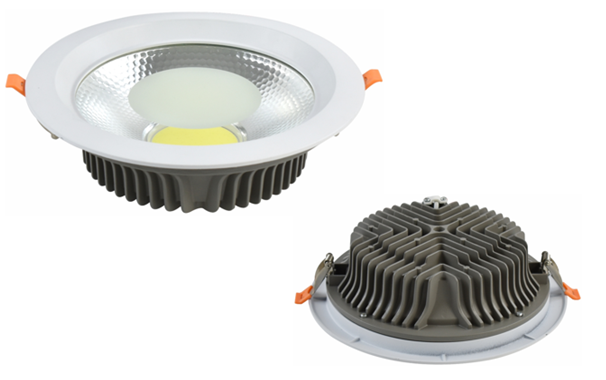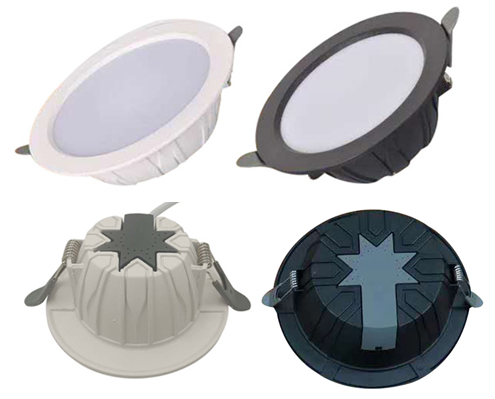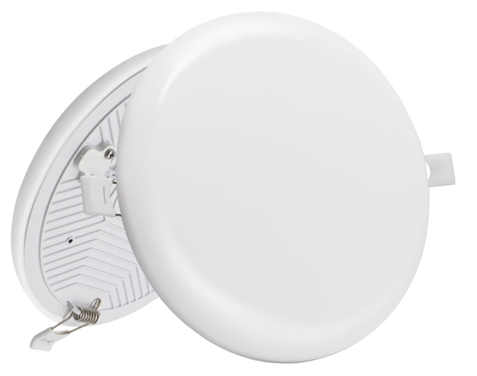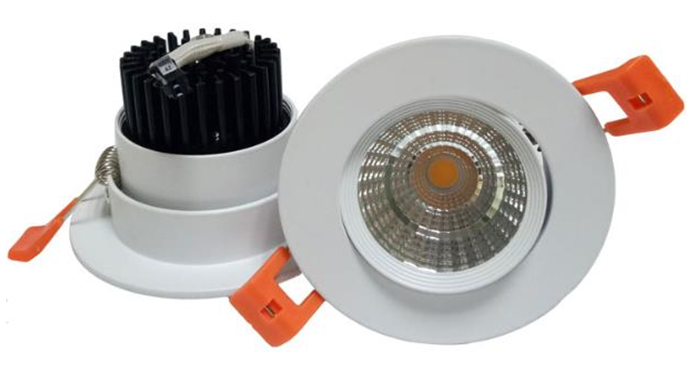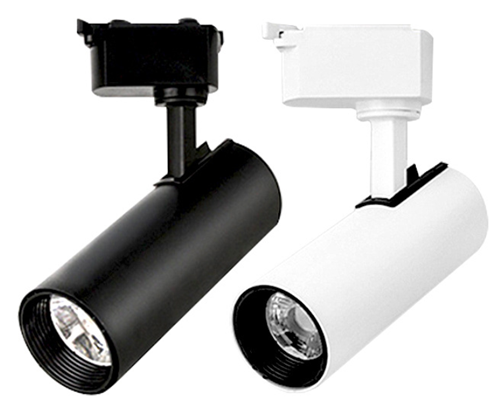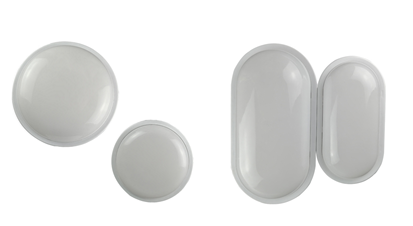Newstype
Latestnews
Hotnews
Enabling a wireless smart lighting system – with an internet address for every light bulb
 The 'Internet of Things' (IoT), in conjunction with wireless connectivity, can deliver a smart wireless Internet-enabLED and highly energy-efficient Lighting network for use in the home and in commercial lighting applications.
The 'Internet of Things' (IoT), in conjunction with wireless connectivity, can deliver a smart wireless Internet-enabLED and highly energy-efficient Lighting network for use in the home and in commercial lighting applications.
The need for homes and businesses to reduce both energy consumption and costs is increasing rapidly. Consequently smart-energy solutions are becoming more important to deliver higher energy efficiency and to reduce carbon footprints overall. Lighting is a natural application for smart-energy solutions as it can typically account for as much as 25% of electricity usage in the home – and a significant proportion of energy consumption in businesses. Approximately 12 billion lamps are sold worldwide annually. In terms of revenues, according to a report published in November 2011 by Transparency Market Research, the global energy-efficient lighting technology market is estimated to be US$118.7 billion in 2011 and is expected to reach US$173.4 billion in 2016, a compound annual growth rate (CAGR) of 7.9%. The LED segment of the market is predicted to be the fastest growing with a CAGR of 14.9% over the same period.
Affordable smart lighting in the home now a reality
A smart lighting system provides easy and remote access to lighting control and allows energy-saving light bulbs, such as solid-state-lighting (SSL) LED lamps and compact fluorescent lamps (CFLs), to be switched on/off and dimmed using a control device. Additionally, compatibility with sensors can provide an automatic response to ambient light levels or a motion detector – for example, when a person leaves a room. A smart system also enables flexibility of control that can be used for many purposes, such as reducing energy consumption by dimming lighting when watching TV, saving between 10 and 30 per cent of energy usage; or offering increased security of premises by enabling the automatic or remote switching on/off of lights.
A confluence of factors has now made it possible to deliver a highly cost-effective retrofitted smart-lighting system for the domestic home. Some of the contributing factors include the emergence of solid-state LED lamps (and also the dimming capabilities of solid-state LEDs and, recently, CFLs); the relatively recent emergence and availability of important new wireless communication standards such as JenNet-IP and 6LoWPAN for controlling low-power transceivers in wireless personal- or home-area networks; and the increasing capabilities of wireless and low-power microcontrollers, which are fast reaching the dollar price point and therefore can be affordably used in cost-sensitive products such as light bulbs.
'Internet of Things' and an IP address for every bulb
It is clearly possible to wire up control signals to individual lamps in every room in a house to deliver both remote access and more sophisticated control over lighting. However in practice the cost of such and installation is extremely prohibitive as cabling is expensive, even for a new build. However, the ‘Internet of Things’, in conjunction with wireless technology, offers new possibilities with a means to install many sensors and actuators at very low cost.
In the ‘Internet of Things’ physical objects or devices can have their own unique Internet Protocol (IP) address, enabling them to be seamlessly integrated into an Internet-based information network and monitored and controlled, either individually or in groups. The recent introduction of IPv6 (Internet Protocol version 6, the successor to IPv4) offers approximately 5 x 1028 addresses for every person on the planet, making it possible for any device in the world, including light bulbs, to be given a unique IP address.
IPv6 provides a basic transport mechanism to produce complex control systems and to communicate with devices in a cost-effective manner via a low-power wireless network that has been designed for home or building automation. By providing wireless IP-based networking connectivity to lamps, and indeed other home devices such as thermostats or white goods, a new dimension in control flexibility becomes a reality, including the ability to monitor and control lights to reduce energy usage via easy-to-use software running on smart consumer devices.
Improving and extending lighting system flexibility
Although basic control functionality is of course available as standard in the wired lighting system in any house or apartment, wireless operation can be used to improve and extend flexibility and ease-of-use in ways that until now have only been available via expensive home automation control systems. Embedding a low-cost wireless microcontroller inside a lamp enables wireless connectivity in each light source, making it possible to provide remote control of lighting in a variety of scenarios, ranging from a single bulb in a lamp, to clusters of lamps in a single light fitting, several lamps in a room, or a whole house or apartment.
Being able to control dimming levels and advanced settings such as colour temperatures in the more-sophisticated LED bulbs means that the lighting can be configured to suit different moods or take account of ambient lighting conditions. Different lighting ‘scenes’ in the home can be created such as dimming lights in a room to watch TV or using a single high-brightness lamp for reading. The ability to turn lighting on and off when the property is unoccupied enhances security; extending the system to include occupancy sensors allows lighting to be turned off when it is not required, providing energy and cost savings of up to 30%.
Communication has even more impact if it is two-way: it becomes possible to monitor the number of burning hours for each lamp, count the number and frequency of switch on/off cycles, measure energy usage and detect lamp failures. This information can be used to optimize maintenance schedules in large-scale commercial and industrial and street lighting installations and thus to reduce total cost of ownership.
Control can be exercised from different kinds of device: a smart phone, tablet or PC running software with a rich graphical interface provides the means to configure all of the previously mentioned capabilities; whereas a simple remote control with no display is suitable for on/off and dimming control of groups or individual lamps; and at the lowest level a wireless wall switch or dimmer provides basic control over all lamps in a particular room.
JenNet-IP based networking
A key element in the system is the smart control of devices. Many current smart control systems use protocols that provide connectivity, but commonly do not offer seamless end-to-end IP communication between devices on the Internet and those in the local network. They often require separate bridging devices with protocol conversion and address translation to interface to the Internet.
The JenNet-IP network layer software provides a standards-based wireless sensor network that offers full IPv6 (and IPv4) connectivity to all nodes in a network. The JenNet-IP 6LoWPAN (IPv6 over Low power Wireless Personal Area Network) ‘mesh-under’ tree network’ operates using the well-established IEEE 802.15.4 standard that provides a radio and MAC (Media Access Control) platform and functions in the worldwide 2.4GHz ISM radio band.
Devices are connected together using a new version of the robust and established JenNet tree networking layer. Interoperability between devices is ensured using an easy to use lightweight MIB-based API (Application Programming Interface) support layer. The standardised MIB (Management Information Base) built into the software defines behaviours of common devices. Typical behaviours include lamp on/off, dim up/down, colour change, or monitoring of power usage, burning hours and on-off switching cycles. Thus the system offers high levels of flexibility, enabling developers to use pre-defined behaviours of and to add their own functionality.

Figure 1. JenNet-IP Network Diagram
Figure 1 shows a consumer device, such as a smartphone, tablet or PC, controlling a lighting network via the Internet. The Smartphone application sends DIPL commands to lights via IP through the Internet cloud and the home gateway into a wireless IP network. The lights run an application on a wireless microcontroller to interpret the DIPL commands and control the light.
Robust and secure networking
In addition to providing true IP connectivity from the Internet to devices in the home, JenNet-IP provides a highly robust ‘self-healing’ tree network proven at over 250 nodes. JenNet-IP implements a ‘gateway-less’ mode of operation, which allows the system to carry on working even if the Internet gateway fails; or if a lamp is simply out of range of the gateway it will still connect with other powered lamps via the tree network. If one of the established routes fails, due to a faulty router for example, the network will detect this and will automatically try and re-establish alternative routing through a nearby node, providing a high degree of robustness and reliability – which is essential for successful deployment. Additionally, JenNet-IP is also highly secure, offering the 128-bit AES encryption built into IEEE802.15.4 for authentication and device joining, ensuring that networks cannot be hacked, remain unique to their owner and do not overlap with adjacent ones.
GreenChip smart lighting solution
In terms of bulb or lamp hardware implementation, NXP’s GreenChip is a complete hardware and software smart-lighting solution that delivers the necessary electronics at the size, cost and power consumption to fit in an everyday light bulb. It brings together wireless IP connectivity – in which each light bulb has its own IP address – smart control software, and standby power down to 50mW in a compact, low-cost and highly energy efficient solution, enabling new ways to control lights and manage energy consumption. As previously mentioned, the highly competitive cost of microcontrollers with wireless capability means integration into individual lamps or light fittings is an incremental cost when considering the typical retail price for an LED lamp today.
The GreenChip reference design (shown in Figure 2) integrates into the body of the bulb itself the JN5148 wireless microcontroller, the TEA1721 power supply devices, and the SSL210x driver for LED lamps or UBA202x for CFLs. The antenna is printed on the PCB and connects directly to the JN5148 wireless microcontroller, which has a low power consumption of 15mA in transmit and 17.5mA in receive mode; and just a few nanoamps in sleep mode, enabling a multi-year battery life.

Figure 2. System architecture of the GreenChip smart lighting solution
The lighting application controlling the bulb, and also monitoring its power consumption, communicates to either remote devices or to the Internet via the DIPL and the JenNet-IP 6LoWPAN wireless network. Additionally, GreenChip-enabLED lightbulbs will be able to operate on the same wireless sensor networks that consumers may already be using at home for energy metering, smart appliances and security systems. Application possibilities range from the control and management of small-scale residential installations to very large commercial and industrial facilities, where IP-connectivity facilitates the seamless integration of a lighting network into building management systems through the existing wired Ethernet backbone, and one or more JenNet-IP to Ethernet bridges.
JenNet-IP systems have already been deployed in a number of trial sites, primarily in lighting applications, and have demonstrated that a practical and easily affordable solution enabling wireless-connected devices to be installed and operated in the domestic home is now a reality.

 Chinese
Chinese English
English